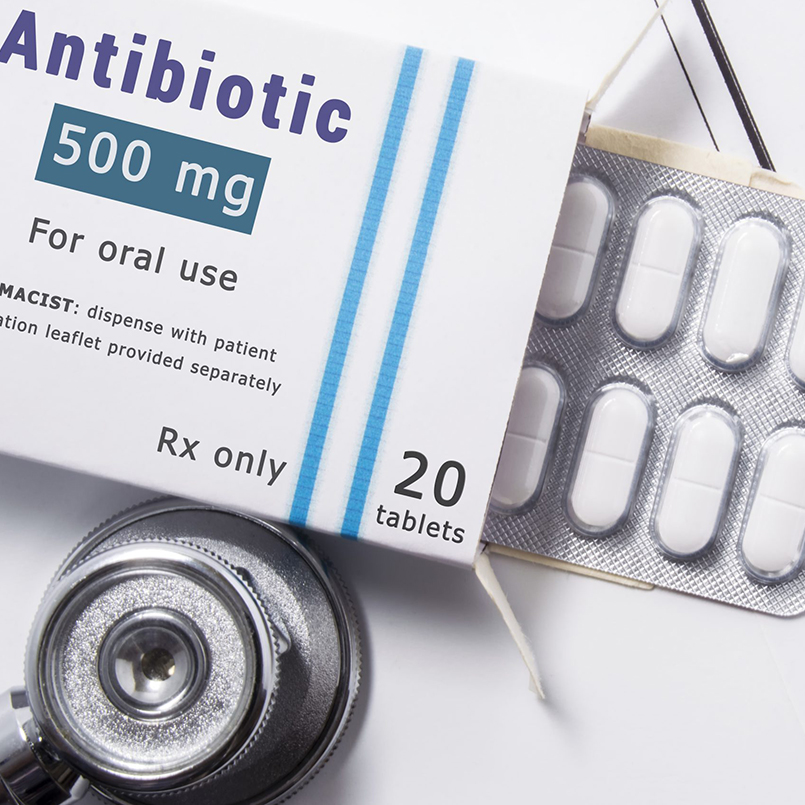How to take antibiotics:
As mentioned before, antibiotics are not used to treat viral infections and are used to treat microbial infections including bacteria and parasites, because in most cases, infections caused by viruses such as the common cold virus and Influenza as well as fungi such as oral or vaginal thrush and fungal skin infections are not treated by antibiotics and it is necessary to use other drugs to treat them. In cases where there is a bacterial infection, it is necessary to start taking the medicine as prescribed by the doctor as soon as possible because a minor bacterial infection may turn into a more serious secondary bacterial infection if left untreated.
Antibiotics are taken in different ways such as tablets, capsules or syrups orally or intravenously. Usually, people who are hospitalized due to severe infections receive antibiotics by injection. In some cases, creams, ointments, and medicinal lotions are also used for skin applications.
The effect of antibiotics on cells:
When bacterial or parasite cells cause an infection in the body, by taking antibiotics, the drug causes the following in a bacterial cell: – Destruction of the cell wall – Preventing the bacterial cell’s gene from working – Preventing the protein from being made in Bacterial cell.
In this way, the drug causes the complete destruction of the cells of the bacteria or parasite and prevents its function. In most cases, antibiotics destroy the structure of the bacterial cell wall, but they may prevent the proliferation of bacteria and parasites in some cases.
The most famous antibiotics:
These drugs have different types, each group of which is used to treat certain bacteria and microbes: – Penicillins, which include penicillin and amoxicillin, which are used to treat a variety of infections such as urinary tract infections, Chest and skin infections are used. – Cephalosporins such as cephalexin, which are effective for treating more serious infections such as meningitis. – Aminoglycosides such as gentamicin and tobramycin, which are usually only available in the hospital because they can have dangerous side effects such as kidney damage and hearing loss when taken on their own. Also, they are usually taken by injection, although in some cases, such as ear or eye infections, their drops may be used. Tetracyclines, such as tetracycline and doxycycline, are commonly used to treat acne, especially when the infection is severe. – Macrolides such as erythromycin and clarithromycin, which are used to treat lung and chest infections. This type of antibiotic may be used to treat infections in people who are allergic to penicillin. – Fluoroquinolones such as ciprofloxacin and levofloxacin are used to treat a variety of infections.
Uses of antibiotics:
In the following cases, it is necessary to use this type of medicine properly: – Staphylococcal skin infections such as impetigo. This is a very acute and microbial type of disease that occurs in the form of purulent blisters. The prevalence of this disease is higher in children and it is transmitted through skin contact as well as shared clothes and sheets. – Streptococcal skin infections such as cellulitis. This type of bacterial infection affects the interdermal membrane and subcutaneous fat. In this disease, a red area is created on the skin, which expands over time. – Ear and sinus infections, sore throat caused by streptococcus.
In the above cases, if antibiotics are not used, it can be very dangerous and even fatal, and in cases of severe bacterial infection, it is necessary to hospitalize the patient and to use intravenous medicine for a faster effect in the body. Of course, in many cases, it is necessary to first diagnose the bacterial infection and the type of bacteria using a special test in the laboratory, and then prescribe the appropriate medicine. Usually, when the patient receives the drug by injection, after 48 hours and if the clinical symptoms improve, the remaining doses are taken orally.
In what cases should antibiotics not be used?
In cases where viruses have caused various types of cough and cold, there is no need to prescribe antibiotics. It is also necessary to avoid self-administration of these drugs without a doctor’s prescription. If antibiotics are used without a doctor’s prescription and also in cases where it is not necessary, they cause the following: – Bacteria resistance to antibiotics increases. – Antibiotics may have severe side effects in many people.
Important points in taking medicine:
Considering the variety of antibiotics, it is very rare that someone cannot use any antibiotics, for example, if a person is allergic to penicillin, alternative drugs can be used for him. In cases such as pregnancy, certain types may be prohibited for the patient, but a specialist doctor can prescribe the appropriate type for consumption during pregnancy. Also, if the patient is taking a certain medicine, it may interfere with some antibiotics, and the doctor may prescribe that the patient stop taking the medicine and after taking the antibiotic, take his usual medicine again. Therefore, in case of any bacterial infection, it is necessary to inform the doctor about other drugs used by the patient.



